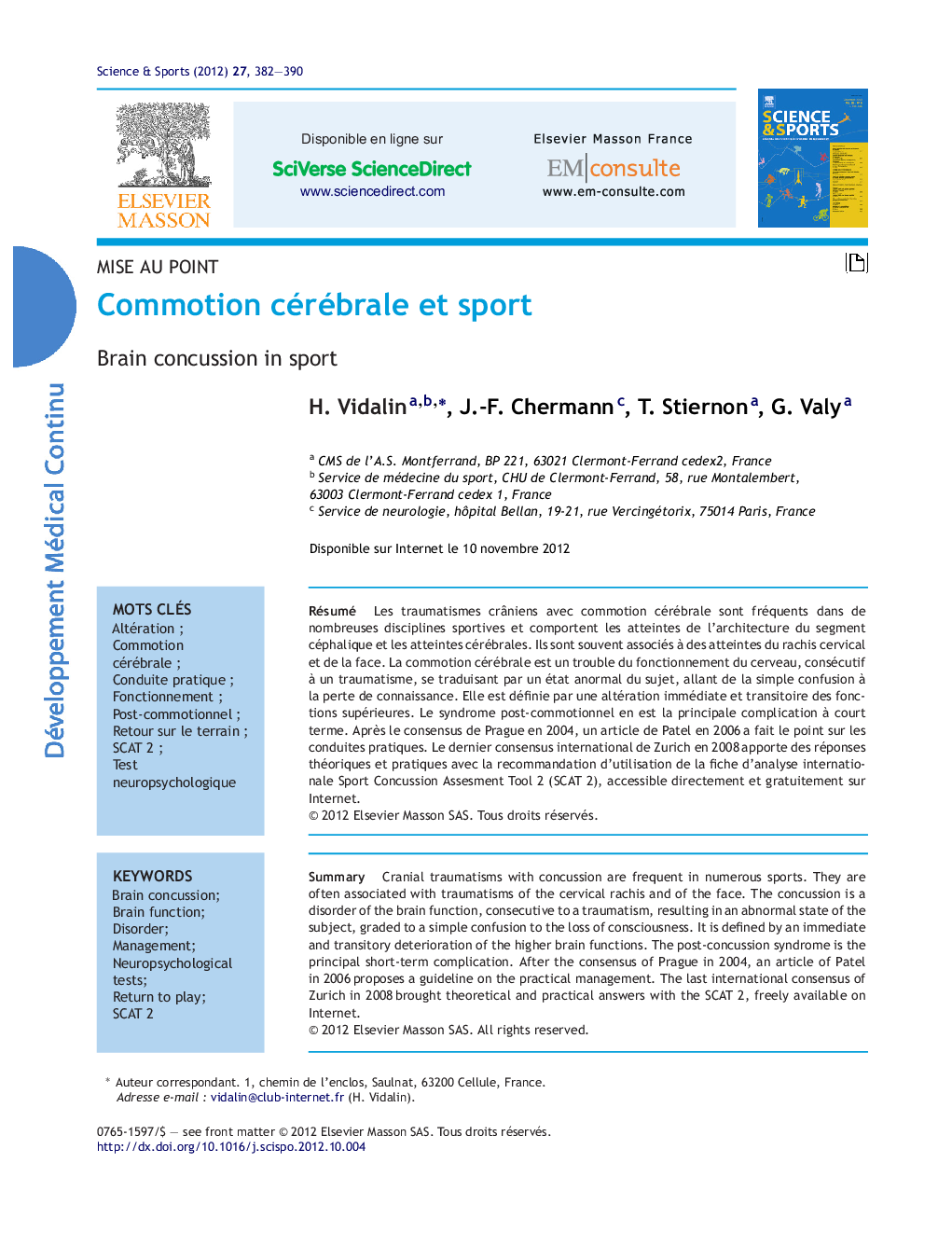| Article ID | Journal | Published Year | Pages | File Type |
|---|---|---|---|---|
| 4093182 | Science & Sports | 2012 | 9 Pages |
RésuméLes traumatismes crâniens avec commotion cérébrale sont fréquents dans de nombreuses disciplines sportives et comportent les atteintes de l’architecture du segment céphalique et les atteintes cérébrales. Ils sont souvent associés à des atteintes du rachis cervical et de la face. La commotion cérébrale est un trouble du fonctionnement du cerveau, consécutif à un traumatisme, se traduisant par un état anormal du sujet, allant de la simple confusion à la perte de connaissance. Elle est définie par une altération immédiate et transitoire des fonctions supérieures. Le syndrome post-commotionnel en est la principale complication à court terme. Après le consensus de Prague en 2004, un article de Patel en 2006 a fait le point sur les conduites pratiques. Le dernier consensus international de Zurich en 2008 apporte des réponses théoriques et pratiques avec la recommandation d’utilisation de la fiche d’analyse internationale Sport Concussion Assesment Tool 2 (SCAT 2), accessible directement et gratuitement sur Internet.
SummaryCranial traumatisms with concussion are frequent in numerous sports. They are often associated with traumatisms of the cervical rachis and of the face. The concussion is a disorder of the brain function, consecutive to a traumatism, resulting in an abnormal state of the subject, graded to a simple confusion to the loss of consciousness. It is defined by an immediate and transitory deterioration of the higher brain functions. The post-concussion syndrome is the principal short-term complication. After the consensus of Prague in 2004, an article of Patel in 2006 proposes a guideline on the practical management. The last international consensus of Zurich in 2008 brought theoretical and practical answers with the SCAT 2, freely available on Internet.
